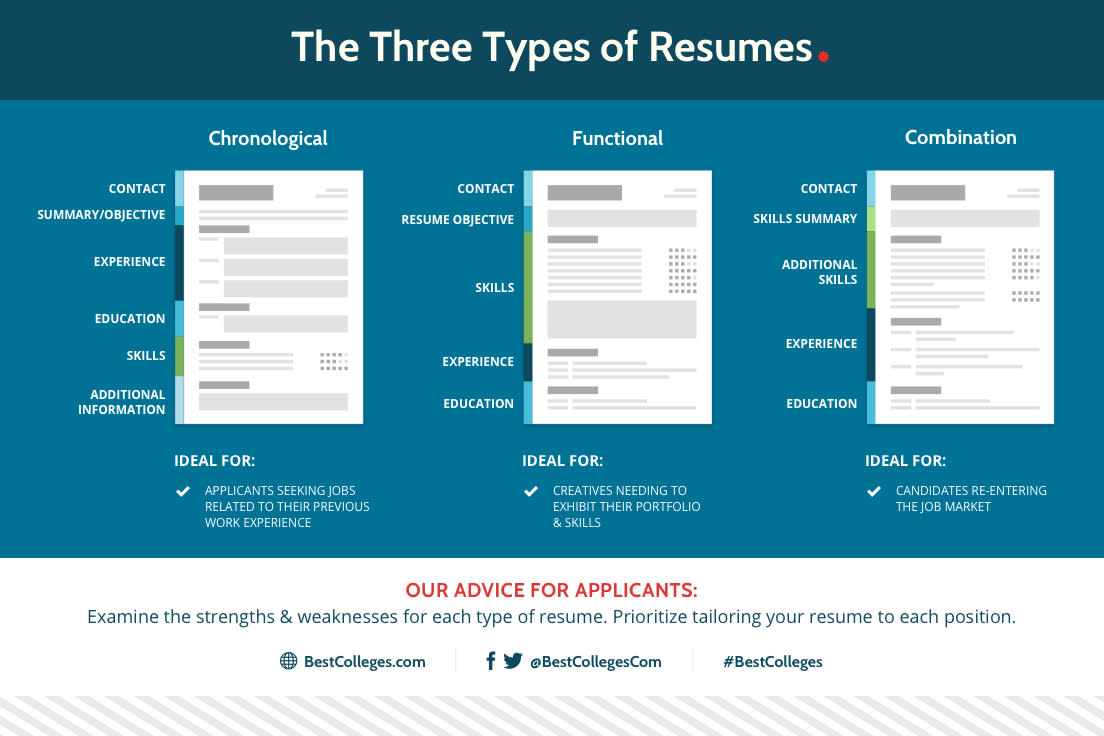

This video explores the three of the most popular resume formats: (reverse) chronological, functional, and combination formats - breaking down each format's unique features to help you understand which aligns best with your experiences and goals.
What Makes a Great Resume? by Cathy Wasserman and Lauren B. Weinstein
If you’re struggling to get your resume noticed, it’s time to add some soul into it. Don’t treat it like a document with a laundry list of your responsibilities and successes. Rather, work on converting it into a document that conveys what truly motivates you as a professional.

18 Résumé Writing Tips to Help You Stand Out By Allison Pohle
A résumé isn’t just a list of every job you’ve ever had. It should demonstrate your accomplishments. Mirror language used in the job posting so your résumé isn’t discarded by an applicant tracking system. Use a clean and simple format.

Begin by writing down all of the experiences you have had that could relate to your potential job
Examples:
Most popular format
Emphasizes employment history and experience
Highlights your information from the most recent and relevant to the oldest and least relevant
100% based on your skills
Emphasizes your specific accomplishments and skills
The format lists your skills by groups
This format is recommended for the following situations: people with gaps in their work history, people wanting to change careers, and people a wide variety of skills
This format combines the chronological and the functional formats - emphasizing skills and accomplishments, while also listing work history

REMEMBER:
Your resume and your cover letter need to match so many of the same formatting rules apply:
DO NOT use pronouns or first person ("I", "me", "my")
DO NOT put your high school if you have attended secondary education
DO NOT put educational institutions that you did not graduate from
DO NOT use employment history that would not reflect positively on you
DO NOT use personal information (family, children, marital status, ethnicity, age, gender, religion, political affiliations, visa status or revealing photographs)